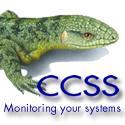The guide suggests system availability concerns often can be avoided altogether with a more rigorous approach to systems management that identifies issues before they escalate towards the user community or a downtime event.
CCSS has issued a new best practices guide for the iSeries community that shows how to achieve optimal availability through systems management in five simple steps. The issue of availability is one of the most costly and hotly debated areas within systems management. By definition, problems experienced by the user community can be perceived as a lack of availability, even if that is not strictly the issue. Added to this, problems that lead to genuine instances of "downtime," and the expense that comes with it, might be replicated in any new environment following an HA fail-over. The new CCSS guide suggests these concerns can be avoided altogether with a more rigorous approach to systems management which identifies issues before they escalate towards the user community or a downtime event.
Most organizations can peg their downtime to a financial figure that accounts for extra resource use or an unproductive user community but for some organizations, especially those within the managed services industry, or those running SLA’s, the availability issue also carries the added burden of financial penalties. The availability guide examines the example of an organization where SLA’s are breached when HA software that relies on journal receivers, like the audit journal, are compromised by rogue jobs. The financial consequence in this scenario is increased as the organization is obliged to make extra DASD available until the issue is resolved. This exemplifies the types of challenges that face IT managers and highlights the sheer range of underlying problems that can have a detrimental impact on availability.
Paul Ratchford, Product manager for CCSS, says, “When addressing the availability issue, it’s helpful to consider all the channels of dependency that run from the user community back to the system’s environment. Applications, jobs, subsystems and communication elements are all areas where a particular problem could quickly escalate into a problem of availability. Monitoring these areas with a proactive approach reduces the risk of a true downtime situation and virtually eliminates those circumstances where a problem may be replicated in a new environment following an unforeseen downtime event."
The five-step availability guide offers a proven path to implementing "best practice" protocols that specifically reduce the time it takes to resolve issues and the costs that these issues often incur. Identifying problems at an early stage, especially when those issues could impact the system performance or availability to the user community, is an essential requirement for IT managers. This ability to identify problems in real-time can be then coupled with a suitable, pre-defined response, such as a combination of alerts, escalation procedures, and even automated response commands. When irregularities do occur, for example when a journal receiver or TCP port becomes inactive, this approach will help to ensure there is no opportunity for these events to be overlooked.
The availability guide endorses a proactive approach with real-time response for organizations of all sizes–even the largest and best equipped environments that already benefit from global mirroring or HA solutions. This is because HA solutions are designed to react to the downtime event rather than systems management solutions which aim to prevent them. When used in partnership, the combination provides the best protection against availability issues. According to CCSS, QSystem Monitor, QMessage Monitor and QRemote Control provide both the flexibility and functionality to help IT managers get to grips with their availability issues by creating a high degree of visibility and awareness over the "hotspots" where problems typically occur, namely in objects, communication status and job status conditions.
To download the guide in full, visit the MC Press White Paper Center. or join the CCSS LinkedIn Group, http://www.linkedin.com/company/ccss-usa-corp. For more information on CCSS, availability monitoring and the suite of CCSS systems management solutions, visit http://www.ccssltd.com/products/.












 Business users want new applications now. Market and regulatory pressures require faster application updates and delivery into production. Your IBM i developers may be approaching retirement, and you see no sure way to fill their positions with experienced developers. In addition, you may be caught between maintaining your existing applications and the uncertainty of moving to something new.
Business users want new applications now. Market and regulatory pressures require faster application updates and delivery into production. Your IBM i developers may be approaching retirement, and you see no sure way to fill their positions with experienced developers. In addition, you may be caught between maintaining your existing applications and the uncertainty of moving to something new. IT managers hoping to find new IBM i talent are discovering that the pool of experienced RPG programmers and operators or administrators with intimate knowledge of the operating system and the applications that run on it is small. This begs the question: How will you manage the platform that supports such a big part of your business? This guide offers strategies and software suggestions to help you plan IT staffing and resources and smooth the transition after your AS/400 talent retires. Read on to learn:
IT managers hoping to find new IBM i talent are discovering that the pool of experienced RPG programmers and operators or administrators with intimate knowledge of the operating system and the applications that run on it is small. This begs the question: How will you manage the platform that supports such a big part of your business? This guide offers strategies and software suggestions to help you plan IT staffing and resources and smooth the transition after your AS/400 talent retires. Read on to learn:
LATEST COMMENTS
MC Press Online